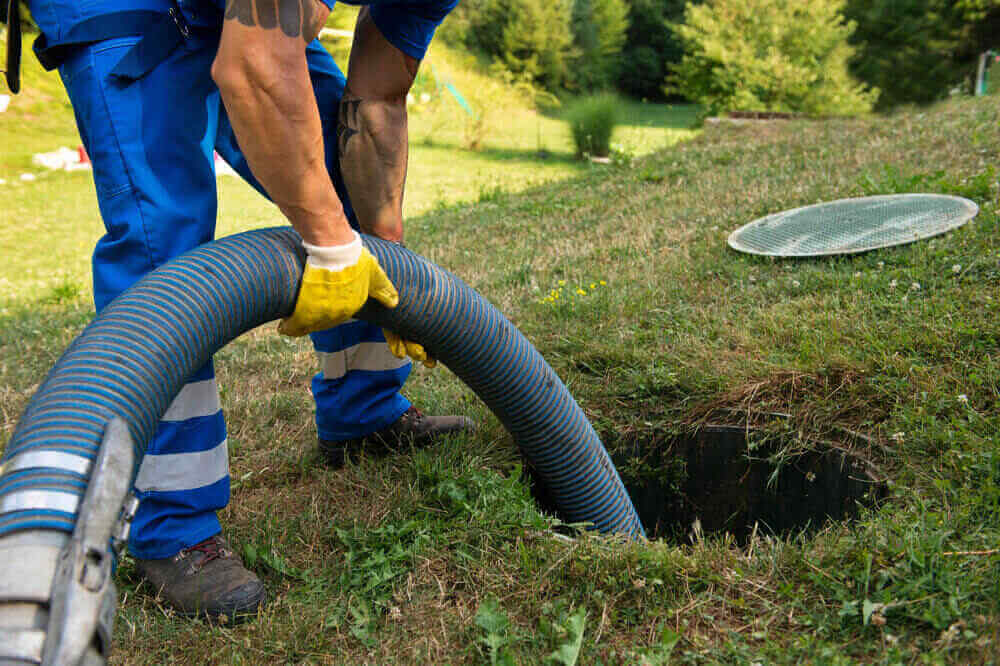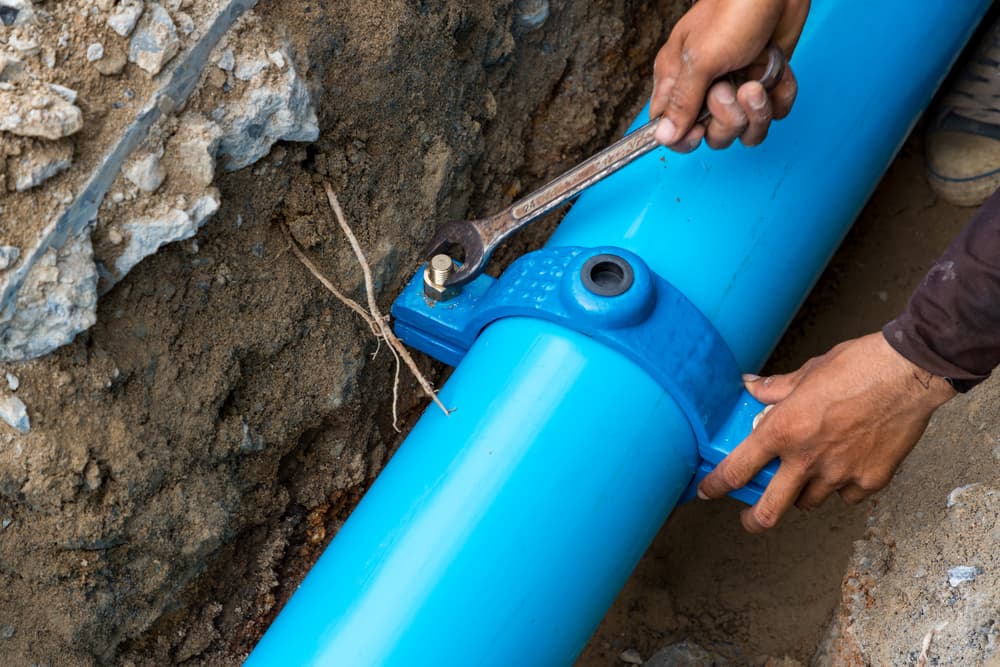Usually, whenever we think of plumbing, we tend to ignore our underground sewer pipes. However, these pipes can easily be damaged by tree roots and clogs. These problems have to be dealt with immediately or else they can result in even more damage.
Now if you’re wringing your hands about the cost of replacing your sewer line, there’s no need to worry. You don’t have to replace your entire sewer system as there are affordable sewer repair techniques you can employ. Here are five of the most common sewer line repair methods you can use:
1. Cured-In Place
There are new pipe repair techniques such as cured-in-place pipe (or CIPP) lining that does not require digging. This sewer repair method involves placing a new sewer line filled with epoxy resin into the damaged pipe. This covers up any leaks or openings in the damaged line.
As soon as the damaged pipe is cleaned, the new line with the epoxy resin is placed into it through an access port. The epoxy line then cures the damaged line and seals any cracks. Hot steam is also applied to the new line to quickly harden it.
Pros:
- This sewer line repair method is not as invasive as many traditional like repair methods.
- CIPP lining can elongate the lifespan of your sewer pipes.
Cons:
- Curing of CIPP lining takes up to takes 6-8 hours
2. Pull-In Place
Installing a pull-in place pipe liner requires double access ports. Unlike in CIPP lining, the lining material has already been fashioned to fit the pipe. All that needs to be done is to place it into the damaged pipe from one end and draw it through to the other end. s already shaped to the shape of the pipe before it is placed.
Pull-in-place sewer lines are also cured with epoxy resin. After it is placed in the damaged pipe, it is then filled with hot steam to seal both ends of the sewer.
Pros:
- After the entry spots have been closed off, repairs are typically completed quickly—steam-cured liners can dry in as little as 20 minutes.
- Large fractures and gaps can be effectively filled with a pull-in-place liner.
Cons:
- The pipe needs two access points.

3. Pipe Bursting
The best way to deal with a sewer that is completely damaged is to remove it completely and replace it with a new pipe. However, digging is not involved in this process. Using a technique called Tube bursting, the new sewer line can be placed in the system without tearing up your yard to make trenches.
The plumbing company will simply make two small trenches at both ends of the pipe as access points. Afterward, a hydraulic machine with a mechanical “busting head” will be inserted into the sewer line. The head Burt’s, destroying the damaged pipe and placing a new plastic sewer line as it runs through the entire line.
Pros:
- Pipe bursting is a less invasive sewer line repair method.
- Newly installed plastic sewer pipes can survive up to 100 years.
Cons:
- The sewer pipe has to remain underground.
4. Internal Pipe Coating
In this technique, a coating is sprayed inside the damaged sewer pipe to patch up minor leaks or stop more from occurring. If correctly placed, the coating, which is made of thick epoxy resin, can last for many years. The problem with this method of sewer pipe repair is that it could be challenging to gain the necessary access to the line.
The location of repair must be close to drainage disposal to use an inner pipe covering sewer line repair; if not the line has to be detached and reinstalled. The sewer line must be drained, thoroughly cleaned, and cured before the epoxy coating is applied.
Pros:
- A thick epoxy coating can stop new leaks from forming and fix old ones.
- For damaged pipes, internal pipe coating is typically more affordable than other styles of sewage liners.
Cons:
- It’s not easy to access the inner layer of the sewer pipe.
5. Sliplining
Sliplining has proven to be an effective technique for sewage line restoration over the years. A smaller pipe essentially replaces the old one. Grout is used to fill the space left by the old line and its replacement. To stop any leaks, the new line is put inside the old one.
The carrier pipe, a smaller pipe, is commonly made from high-density polyethylene (HDPE) pipes. Polyvinyl chloride (PVC) and fiberglass-reinforced pipe (FRP) are further materials employed. A pipe needs to be reachable from two distinct points to be slip lined.
Pros:
- It is a quick and effective mending technique.
- Instead of replacing the pipe entirely, it requires less disruption.
Cons:
- There must be two access points to the pipe.
- The new line must be less substantial than the old pipe.
Factors to Consider the Sewer Liner for Your Needs
Each sewer repair technique mentioned above will repair leakage in your sewer pipe, but there are a few factors to think about before choosing the best method for your sewer system.
Dimensions of the Damage
If your sewer pipe doesn’t have many cracks, you can opt for the inner pipe coating or slip lining. Pull-in-place linings and CIPP are the best techniques for repairing numerous leaks across an entire system. Choose pipe bursting, nonetheless, if the drain line has to be replaced.
Existence of Repair Options
Compared to other home renovation specialists, sewer repair specialists are less common. The ability to complete all of these updates may not be available with every constructor. Depending on your region and the workers who can assist you, your drain lining solutions may be minimal.
Budget
Various price points are available for these drainage repair supplies. Request price estimates for each sewer line repair solution so you may fairly compare your choices.
Speak With Your Local Sewer Repair in Seattle
We are dedicated to serving all of our customers’ sewer-related requirements here at NW Sewer & Drain. You can reach out to us today at office@nwsewer.com.
We’re excited to help you sort out any drain issues you might be facing in your home or office building. Ideally, consulting an experienced local sewer and drain cleaning company should be your following line of action if you are experiencing slow-moving drains, foul odor, or clogged drains in your home and need help figuring out what else to do.
At N.W. Sewer & Drain, we have a well-trained and ready-to-move team on standby. We serve the Seattle metropolitan area, including Bellevue, Kirkland, Shoreline, Renton, Lake Forest Park, Mountlake Terrace, Auburn, Everett, Marysville, Mount Vernon, and other surrounding areas.
N.W. Sewer & Drain provides top-notch drain cleaning and sewer repair services in the greater Seattle area, and we’ve been in the business for 20 years. Contact us today at 206-931-7728 to schedule an inspection of your sewer line and pipes.
FAQs About Sewer Line Repair Methods
What is CIPP lining, and how does it work?
CIPP lining, or cured-in-place pipe lining, involves placing a new sewer line filled with epoxy resin into the damaged pipe. This method covers leaks or openings without the need for extensive digging. The epoxy line is cured and hardened, prolonging the lifespan of the sewer pipes.
How does pull-in-place sewer lining differ from CIPP lining?
Pull-in-place lining requires two access points and uses pre-shaped lining material that is drawn through the damaged pipe. Like CIPP, it is cured with epoxy resin and offers a quick repair solution for sewer lines with large fractures or gaps.
What is pipe bursting, and when is it recommended?
Pipe bursting involves removing the damaged sewer pipe completely and replacing it with a new one. This method is ideal for severely damaged pipes and does not require extensive digging. It offers a less invasive repair option compared to traditional trenching methods.
How does internal pipe coating work, and what are its benefits?
Internal pipe coating involves spraying a thick epoxy resin coating inside the damaged sewer pipe to patch up leaks. While accessing the inner layer may be challenging, this method effectively stops new leaks from forming and is more affordable than other repair options.
What is sliplining, and why is it effective?
Sliplining involves replacing the old sewer pipe with a smaller pipe inserted into the existing one. This method effectively fills the space left by the old line and its replacement, offering a quick and less disruptive repair solution for damaged sewer lines.
What factors should I consider when choosing a sewer repair method?
Factors to consider include the extent of damage to the sewer pipe, the availability of repair options in your area, and your budget. Different repair methods offer varying levels of invasiveness and cost, so it’s essential to evaluate your specific needs.
How long does it take to complete a sewer line repair using CIPP lining?
Curing of CIPP lining typically takes 6-8 hours, depending on the extent of damage and the size of the sewer pipe. While it may take longer than other methods, CIPP lining offers a durable and long-lasting solution for repairing damaged sewer lines.
Are there any drawbacks to using pull-in-place sewer lining?
Pull-in-place lining requires two access points, which may be challenging to create in some situations. Additionally, while steam-cured liners can dry quickly, the process may still take longer compared to other repair methods.
What are the advantages of using pipe bursting over traditional trenching methods?
Pipe bursting offers a less invasive repair option that does not require extensive digging. It allows for the replacement of the sewer pipe without disrupting the surrounding area, making it a preferred choice for many homeowners.
How can I find the best sewer repair service in my area?
Research local sewer repair companies, read reviews, and ask for recommendations from friends or family. Look for experienced professionals who offer a range of repair options and provide transparent pricing and excellent customer service.



